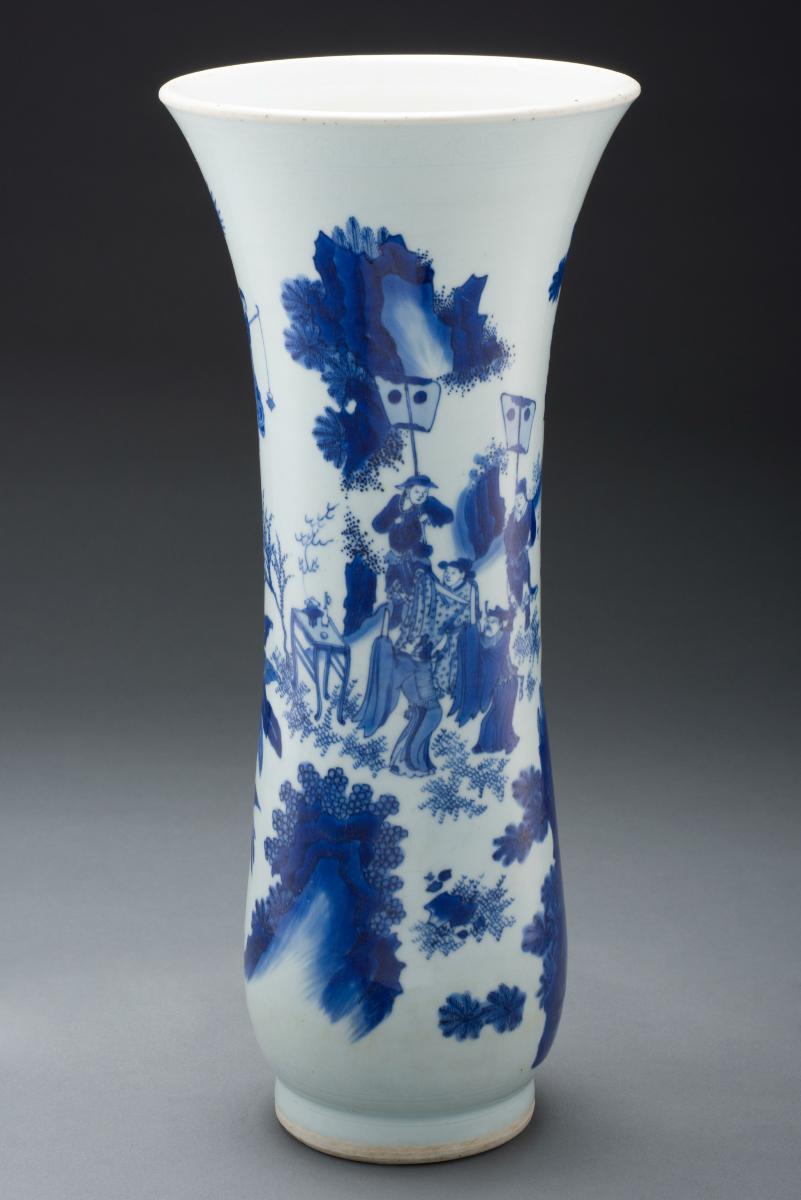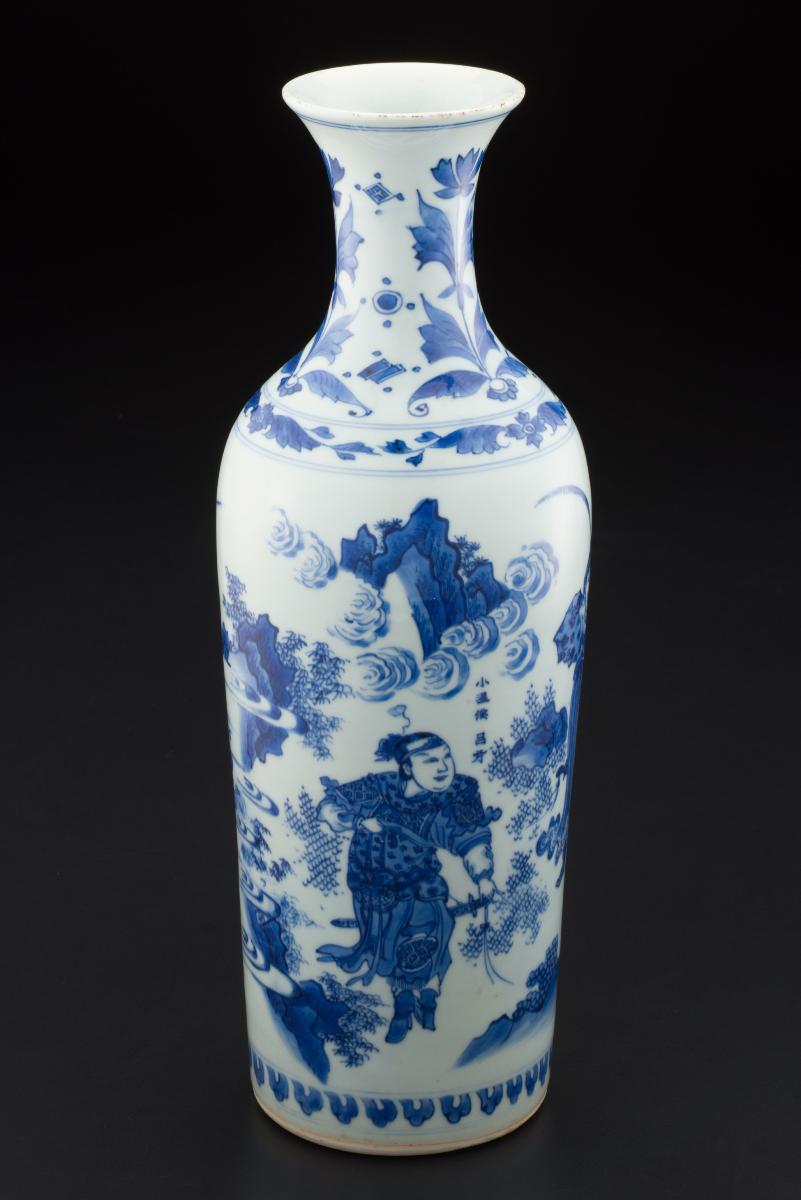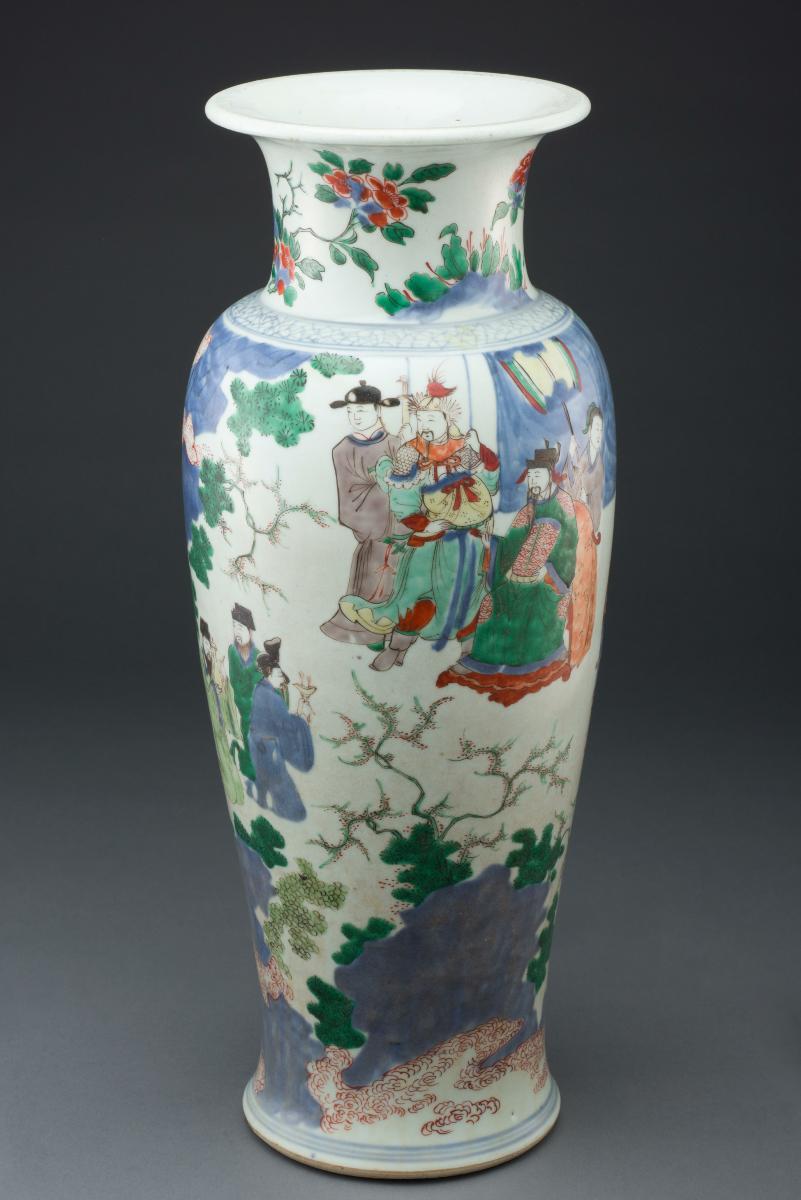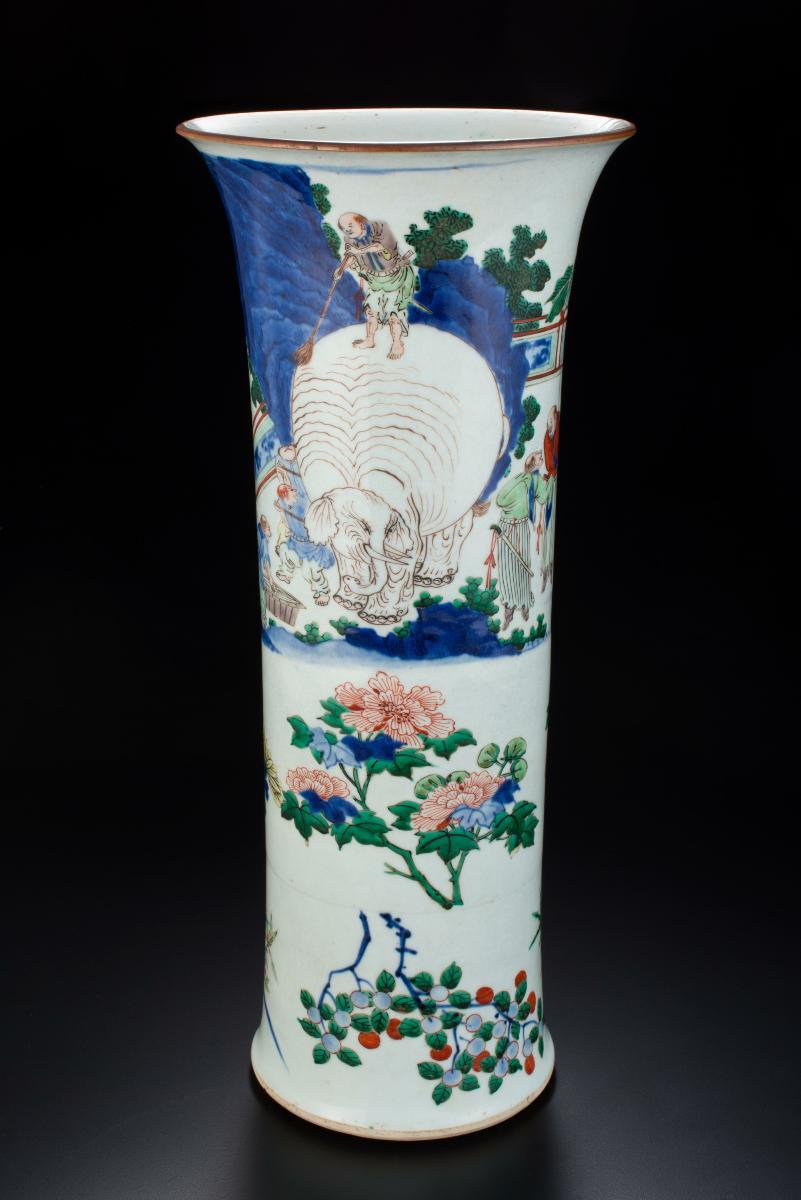This blue and white vase with a flaring rim combines both incised and painted decoration. An incised band of floral scrolls around the rim date this vase to the Transitional period. Other decorative elements such as banana plant and concentric cloud motifs are also typical of these wares. The scene painted on the vase depicts three court officials kneeling to pay respects to a figure, possibly a deity, standing on a cloud with two attendants. Comprising mainly of large vases and jars, these blue and white wares are decorated with narratives of hunting or battle scenes, or scholarly subject matter. ‘Transitional’ wares are so called because they were produced during the transitional period from Ming to Qing rule in China – from 1620 (with the death of the Ming emperor Wanli) until 1683 when the Jingdezhen porcelain industry was revived by Qing imperial patronage. During this 63-year interval, lack of financial support from the imperial court led Jingdezhen potters to search for other markets. Eager customers were found overseas, particularly in Japan and Europe.















